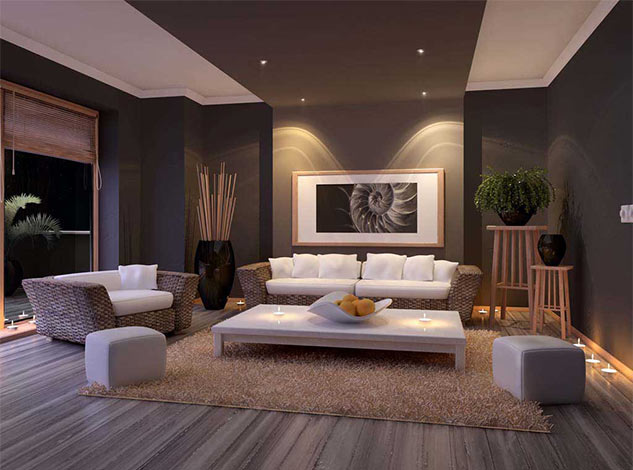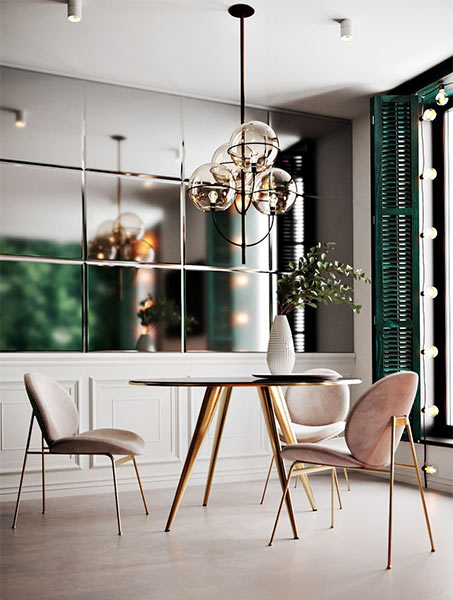Decoration, Interior Design
Interior Design
Interior design is the experience of spaces that are used in our daily lives and affect the way we work, live, play and develop. Unique houses, efficient places, beautiful public spaces, etc. are the result of beautiful designs.
Interior design There are different styles, each of which has its own materials used: 1. Modern style. Classic 3. Minimum 4. Rustic 5. Japanese style 6. Chinese style 7. Maverick style 8. Moroccan style 9. Egyptian style 10. Roman style 11. Indian style 12. Ancient Greek style 13. Rococo style 14. English style 15. Victorian style 16. French style 17. Swedish style 18. Sick Art Nouveau 19. Art Deco style 20. Baroque style 21. Gothic style 22. Origami style 23. Monochromatic style 24. Traditional Iranian style (common in the Qajar period)
Examples of Pooya Art design
The best interior designers make it easy
Designers design spaces that anticipate our needs and take advantage of a wide range of technical skills and knowledge to capture customer sentiment. Interior design has changed dramatically since the early twentieth century, when a profession was just beginning to emerge.
Interior designers are expected to have working knowledge of:
Textiles, materials, colors, space planning, sustainability, etc.
3D and 2D software programs for computer aided design (CAD) and building information modeling (BIM)
Structural requirements, health and safety issues and building codes
Today, interior designers work with contractors, architects, engineers, craftsmen, furniture sellers, business owners and homeowners. To become a successful interior designer, you need good training and skills to work in many fields (architecture, graphic design, decorative arts and textiles, furniture and lighting design). Training is the best way to get the skills you need to succeed.
Interior design is a multifaceted profession in which creative and technical solutions are used in a structure to achieve an interior space. These practical solutions enhance the quality of life and culture of the occupants and are aesthetically appealing. Designs are created in response to coordination with the building shell and acknowledge the physical location and social context of the project.

The best interior designers make it easy
Designers design spaces that anticipate our needs and take advantage of a wide range of technical skills and knowledge to capture customer sentiment. Interior design has changed dramatically since the early twentieth century, when a profession was just beginning to emerge.
Interior designers are expected to have working knowledge of:
Textiles, materials, colors, space planning, sustainability, etc.
3D and 2D software programs for computer aided design (CAD) and building information modeling (BIM)
Structural requirements, health and safety issues and building codes
Today, interior designers work with contractors, architects, engineers, craftsmen, furniture sellers, business owners and homeowners. To become a successful interior designer, you need good training and skills to work in many fields (architecture, graphic design, decorative arts and textiles, furniture and lighting design). Training is the best way to get the skills you need to succeed.
Interior design is a multifaceted profession in which creative and technical solutions are used in a structure to achieve an interior space. These practical solutions enhance the quality of life and culture of the occupants and are aesthetically appealing. Designs are created in response to coordination with the building shell and acknowledge the physical location and social context of the project.
Interior design is a multifaceted profession in which creative and technical solutions are constructed in a structure to achieve an interior space. These solutions are practical and enhance the quality of life and culture of the apartment dwellers and are also aesthetically appealing.
Interior design is created in response to coordination with the building shell and acknowledges the physical location and social context of the project. Plans must adhere to regulatory rules and requirements and promote the principles of environmental sustainability.
The process follows a systematic and coordinated methodology, including research, analysis, and integration of knowledge into the creative process, thereby addressing customer needs and resources to produce an interior space that meets the project objectives.
